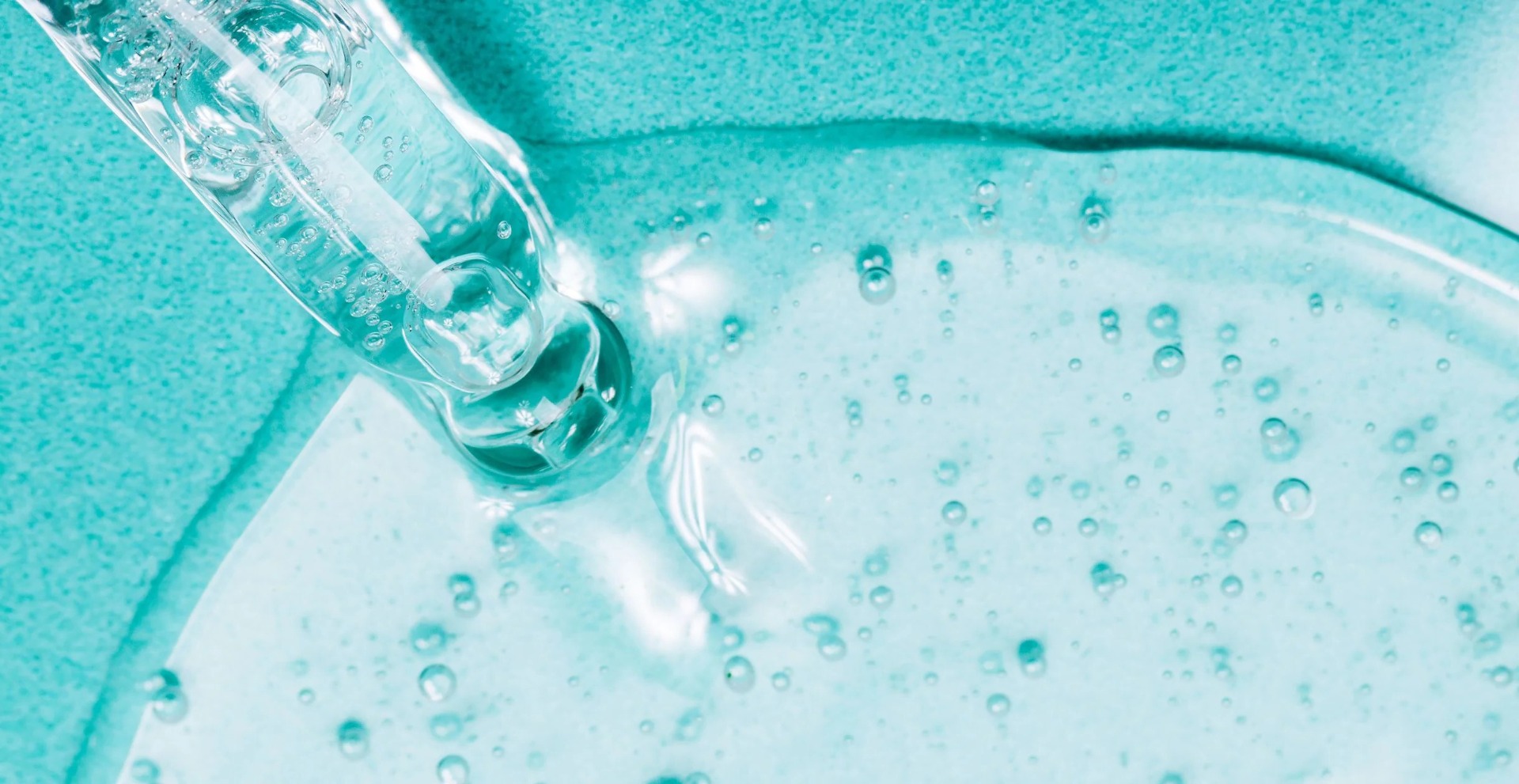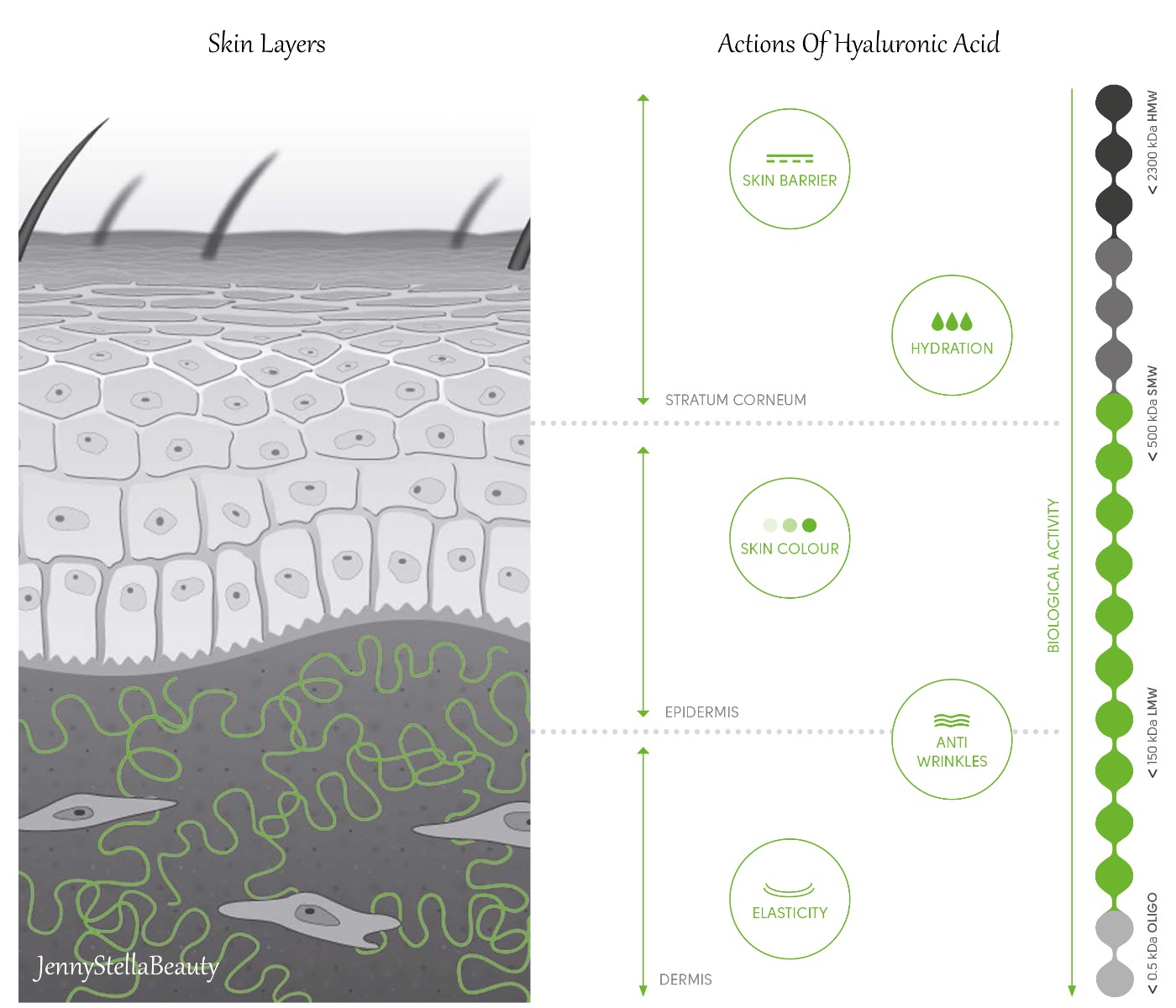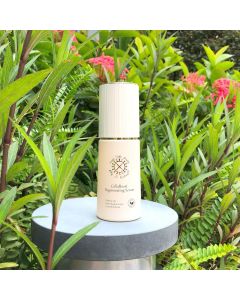Sign Up for Our Newsletter:
What does hyaluronic acid do to our skin?

When we talk about Hyaluronic Acid, does lower molecular weight mean better absorption? Different sizes are actually doing different jobs for our skin!
Hyaluronic Acid (HA) usually appears in cosmetic products in the form of Sodium Hyaluronate. It is an important and naturally existing hydrating ingredient in our skin that retains moisture within. Hyaluronic acid helps skin stretch and flex and reduces skin wrinkles and lines. It is also proven to help wounds heal faster and can reduce scarring.
Researches showed that by adding 0.1% of HA into skincare products can provide the following benefits:
- Enhance natural skin barrier function, reduce transepidermal water loss by 21%.
- Increase of immediate hydration by 41%.
- Protect from environmental pollution and reduce skin lipid peroxidation by 30%.
- Support skin microbiome.
- Decrease sebum production.
- Anti-inflammation & antioxidant effect.
Different molecular weights of HA provide different effects for the skin. The smaller the molecular size, the deeper it can penetrate and act on the underlying layers of the skin to reduce pores and wrinkles. The bigger molecules will stay on the surface layer to keep our skin fully hydrated and protected.
- High Molecular Weight (500-2300 kDa) ~ Film-forming effect based on hydrophilic properties of HA. Improves skin hydration, restores skin barrier function.
- Low Molecular Weight (150-500 kDa) ~ Stabilization of the barrier function of the stratum corneum. Stimulation of intercellular communication. Regulation of inflammatory processes in the skin.
- Very Low Molecular Weight (10-150 kDa) ~ Stimulates synthesis of collagen and body’s own HA. Improves dermal papillae. Supports desquamation, reduces skin pores. Fights epidermal atrophy. Keeps hydrating properties of hyaluronic acid.

To make use of HA to its highest potential, we should choose products that contain the full range of different molecular weights!
Featured Products
on
0


Comments
Leave A Reply
Your email address will not be published.